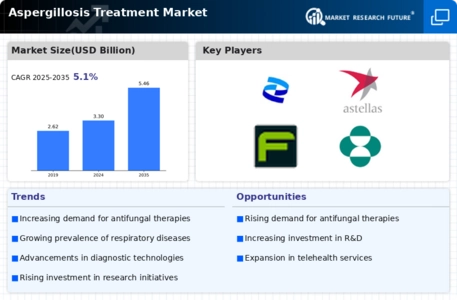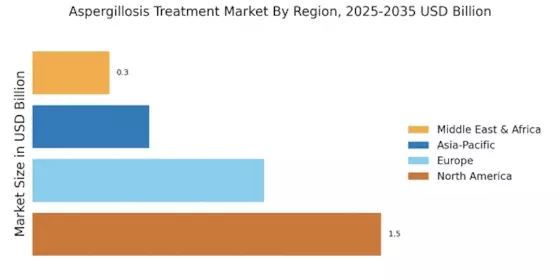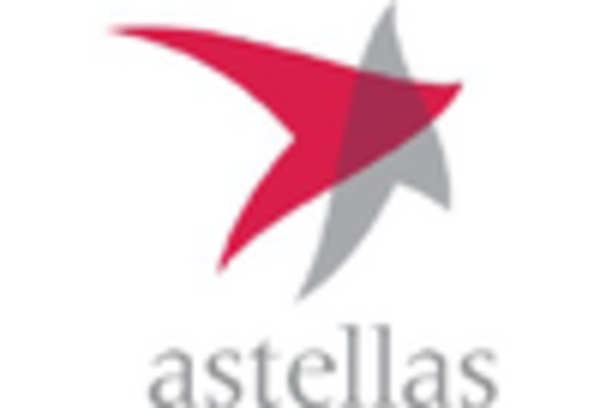Rising Incidence of Aspergillosis
The increasing prevalence of aspergillosis, particularly among immunocompromised patients, is a notable driver for the Aspergillosis Treatment Market. Conditions such as HIV/AIDS, cancer, and organ transplants contribute to a higher susceptibility to fungal infections. According to health statistics, the incidence of invasive aspergillosis has been on the rise, with estimates suggesting that it affects approximately 10% of patients with hematological malignancies. This growing patient population necessitates the development and availability of effective treatment options, thereby propelling the Aspergillosis Treatment Market forward. Furthermore, the awareness of aspergillosis among healthcare professionals is increasing, leading to earlier diagnosis and treatment, which could further stimulate market growth.
Growing Awareness and Education Programs
The rising awareness of aspergillosis among healthcare professionals and the general public is a significant driver for the Aspergillosis Treatment Market. Educational programs and campaigns aimed at increasing knowledge about the disease, its symptoms, and treatment options are being implemented across various platforms. This heightened awareness is crucial for early diagnosis and timely intervention, which can lead to better patient outcomes. Market analysis suggests that as more healthcare providers become educated about the risks and management of aspergillosis, the demand for effective treatments will likely increase. Consequently, this trend is expected to positively impact the Aspergillosis Treatment Market, as more patients seek appropriate care.
Increased Research Funding and Initiatives
The surge in research funding and initiatives aimed at combating fungal infections is a critical driver for the Aspergillosis Treatment Market. Governments and private organizations are increasingly recognizing the need for effective antifungal therapies, leading to enhanced financial support for research projects. For instance, funding for studies focused on the epidemiology and treatment of aspergillosis has seen a marked increase, which is likely to yield new insights and therapeutic options. This influx of resources not only accelerates the pace of innovation but also fosters collaboration among researchers, pharmaceutical companies, and healthcare providers. As a result, the Aspergillosis Treatment Market is expected to benefit from a more robust pipeline of treatments and improved patient outcomes.
Regulatory Support for Antifungal Drug Development
Regulatory bodies are increasingly providing support for the development of antifungal drugs, which serves as a vital driver for the Aspergillosis Treatment Market. Initiatives aimed at expediting the approval process for new antifungal agents are being implemented, allowing for faster access to innovative treatments. This regulatory support is particularly important given the urgent need for effective therapies to combat resistant strains of fungi. Market data indicates that the approval of new antifungal drugs has accelerated, with several promising candidates entering the pipeline. This trend not only enhances the treatment landscape for aspergillosis but also encourages pharmaceutical companies to invest in research and development, thereby fostering growth within the Aspergillosis Treatment Market.
Technological Advancements in Treatment Modalities
Innovations in treatment modalities are significantly influencing the Aspergillosis Treatment Market. The introduction of novel antifungal agents, such as isavuconazole and new formulations of existing drugs, has expanded the therapeutic options available for patients. These advancements not only improve treatment efficacy but also reduce the side effects associated with traditional therapies. Market data indicates that the antifungal drug segment is projected to witness substantial growth, with a compound annual growth rate (CAGR) of over 5% in the coming years. Additionally, the development of combination therapies is gaining traction, as they may enhance treatment outcomes for patients suffering from severe forms of aspergillosis. This trend underscores the importance of continuous research and development in the Aspergillosis Treatment Market.


















Leave a Comment